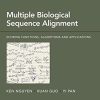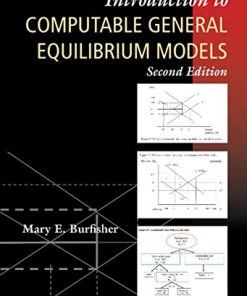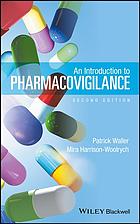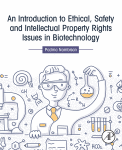An Introduction to Polysaccharide Biotechnology 2nd Edition by Stephen Harding, Michael Tombs, Gary Adams, Berit Smestad Paulsen, Kari Tvete Inngjerdingen, Hilde Barsett ISBN 0815387156 978-0815387152
$50.00 Original price was: $50.00.$25.00Current price is: $25.00.
An Introduction to Polysaccharide Biotechnology 2nd Edition by Stephen Harding, Michael Tombs, Gary Adams, Berit Smestad Paulsen, Kari Tvete Inngjerdingen, Hilde Barsett – Ebook PDF Instant Download/Delivery: 0815387156, 978-0815387152
Full download An Introduction to Polysaccharide Biotechnology 2nd edition after payment

Product details:
ISBN 10: 0815387156
ISBN 13: 978-0815387152
Author: Stephen Harding, Michael Tombs, Gary Adams, Berit Smestad Paulsen, Kari Tvete Inngjerdingen, Hilde Barsett
Polysaccharides and related high molecular weight glycans are hugely diverse with wide application in Biotechnology and great opportunities for further exploitation. An Introduction to Polysaccharide Biotechnology – a second edition of the popular original text by Tombs and Harding – introduces students, researchers, clinicians and industrialists to the properties of some of the key materials involved, how these are applied, some of the economic factors concerning their production and how they are characterized for regulatory purposes.
An Introduction to Polysaccharide Biotechnology 2nd Table of contents:
Chapter 1 Polysaccharides and Their Potential for Biotechnology
1.1 An Introduction to Polysaccharides
1.1.1 Glycosubstances and Glycans
1.1.2 Structures, Nomenclature and Abbreviations
1.1.3 Polysaccharide Polydispersity: Molecular Weight Averages
1.1.4 Solution Properties and Characterization Methods
1.1.5 Measurement of Molecular Weight Averages and Molecular Weight Distribution
1.1.6 Polysaccharide Conformation in Solution
1.1.6.1 Overall or ‘Gross’ Conformation: Haug Triangle
1.1.6.2 Effect of Ionic Strength of the Surrounding Medium
1.1.6.3 Intrinsic Viscosity
1.1.6.4 Conformation Zones
1.1.6.5 More Specific Conformation Information: Rigid Structures
1.1.6.6 Flexible Structures: Worm-Like Coil and Persistence Length
1.1.6.7 Ordered Structure
1.1.7 Imaging of Polysaccharides: X-Ray Fibre Diffraction, Electron Microscopy and Atomic Force Microscopy
1.1.8 Polysaccharide Rheology
1.1.9 Classification of Polysaccharides
1.1.10 The Cell Wall
1.1.10.1 Cellulose
1.1.10.2 Mannans
1.1.10.3 Callose
1.1.10.4 Heteropolymers
1.1.10.5 Heteroglucans
1.1.10.6 Heteroxylans
1.1.10.7 Galactomannans, Glucomannans and Galactoglucomannans
1.1.10.8 Pectins
1.1.10.9 Glycoproteins or Extensins
1.1.10.10 Lignins
1.1.10.11 Alginates
1.1.10.12 Carrageenans
1.1.10.13 Furcellaran
1.1.10.14 Fucans
1.1.10.15 Other Components
1.1.11 Storage Polysaccharides
1.1.11.1 Starch and Glycogens: α-Glucans
1.1.11.2 Fructans
1.1.11.3 β-Glucans
1.1.11.4 Galactans and Arabinogalactans
1.1.11.5 Gums
1.1.12 Polysaccharide Identification or Fingerprinting
1.2 The Potential for Biotechnology
1.2.1 Strategies for Biotechnology
1.2.2 Use of Enzymes in Processes: General Considerations
1.2.3 Choosing a Project
1.2.3.1 Incremental Improvements
1.2.3.2 New Raw Materials and By-Products
1.2.3.3 Inventions
1.2.3.4 Responses to General Innovation
1.2.3.5 Pure Invention
1.2.4 Steps in Biotechnology: Producing An Enzyme
1.2.4.1 Isolating the Enzyme
1.2.4.2 Finding the DNA
1.2.5 Costs
Further Reading
Specific References
Chapter 2 Structural Polysaccharides
2.1 Pectin
2.1.1 Occurrence
2.1.2 Extraction, Production and Uses of Pectins
2.1.3 Enzymatic Modification
2.1.4 Enzymes in Fruit Juices and Process Operations
2.1.5 Biosynthesis
2.1.6 Degradation in vivo
2.1.7 Marker Assisted Selection: the Tomato Ripening Story
2.1.8 Utilization as a Gel Agent
2.1.9 Utilization as a Colloid Stabilizer
2.1.10 Utilization in Emulsions
2.1.11 Phase Separation Effects
2.2 Cellulose and Hemicelluloses
2.2.1 Enzymatic Degradation of Cellulose
2.2.2 Endoglucanases
2.2.3 Exocellobiohydrolases and β-Glucosidases
2.2.4 Enzyme Complex and Cellulosomes
2.2.5 Transgenic Expression
2.2.6 Fused Enzymes
2.2.7 Sources and Current Uses of Cellulases
2.2.8 Waste Paper Processing
2.3 Xylans and Xylanases
2.3.1 Textile Uses
2.3.2 Paper Making
2.4 The ‘Gum’ Mannans: Locust Bean Gum, Guar and Konjac Mannan
2.4.1 Locust Bean (Carob) Gum
2.4.1.1 Extraction
2.4.1.2 Properties
2.4.1.3 Gelation
2.4.1.4 Food Uses
2.4.2 Guar
2.4.2.1 Properties
2.4.2.2 Gelation
2.4.2.3 Chemical Modification
2.4.2.4 Enzymatic Modification of Guar Gum
2.4.2.5 Reduced and Low-Fat Products
2.4.2.6 Uses of Guar
2.4.2.7 Food Uses
2.4.2.8 Textile and Paper Technologies
2.4.2.9 Pharmaceutics and Cosmetics
2.4.3 Konjac Mannan
2.4.3.1 Extraction
2.4.3.2 Properties
2.5 Gum Exudates
2.5.1 Gum Arabic
2.5.2 Gum Tragacanth
2.5.3 Gum Karaya
2.6 Glycosaminoglycans
2.6.1 Hyaluronic Acid
Further Reading
Specific References
Chapter 3 Pectic Polysaccharides and Bioactivity
3.1 Structural Aspects of Pectins
3.2 Pectic Polysaccharides as Immunomodulators
3.3 Pectic Polysaccharides and Importance for Diseases in Mali
3.4 Structure and Bioactivity of Pectic Polysaccharides from Malian Medicinal Plants
3.4.1 Biophytum petersianum
3.4.2 Cochlospermum tinctorium
3.4.3 Cola cordifolia
3.4.4 Combretum glutinosum
3.4.5 Entada africana
3.4.6 Glinus oppositifolius
3.4.7 Opilia celtidifolia
3.4.8 Parkia biglobosa
3.4.9 Syzygium guineense
3.4.10 Terminalia macroptera
3.4.11 Trichilia emetica
3.4.12 Vernonia kotschyana
3.5 Discussion and Summary
Further Reading
Specific References
Chapter 4 Storage Polysaccharides: Starch and Fructans
4.1 Starch
4.1.1 Amylose and Amylopectin
4.1.2 Starch Biosynthesis and Variant Forms
4.1.2.1 Starch Applications
4.1.2.2 Starch Grain Size Distribution
4.1.3 Starch Degradation
4.1.3.1 Starch Grains and Heterogeneous Attack
4.1.4 Enzymes of Starch Degradation
4.1.4.1 α-Amylase
4.1.4.2 β-Amylase
4.1.4.3 Glucoamylase
4.1.4.4 Isoamylase
4.1.4.5 Pullulanase
4.1.4.6 Protein Engineering of the Amylase Family
4.1.4.7 Glucose Isomerase
4.1.5 Process Scale Starch Degradation
4.1.5.1 Starch Grain Isolation
4.1.5.2 Enzyme Digestion
4.1.6 Glucose and Fructose Manufacture
4.1.7 Baking Technology
4.2 Glycogen
4.3 Minor Storage Polysaccharides
4.3.1 Pentosan
4.3.2 Lentinans
4.4 Fructans: Inulin and Levan
4.4.1 Occurrence and Uses
4.4.2 Biosynthesis
4.4.3 Degradation
4.4.4 Characterization
Further Reading
Specific References
Chapter 5 Marine Polysaccharides
5.1 Alginates and Brown Seaweed
5.1.1 Extraction and Production
5.1.2 Properties
5.1.3 Enzymatic and Chemical Modification
5.1.4 Uses of Alginates
5.1.5 Gelling/Thickening/Emulsifiers/Fibres in the Food Industry
5.1.5.1 Gelation
5.1.5.2 Thickening and Surface Active Properties
5.1.5.3 Fibres and Films
5.1.6 Thickening Agents for Use in the Textile and Paper Industries
5.1.7 Wound Healing
5.1.8 Microencapsulation and Controlled Release Systems
5.1.9 Biological Activities of Alginates
5.2 Carrageenans and Red Seaweed
5.2.1 Extraction and Production
5.2.2 Properties
5.2.3 Biomodification: Synergistic Interactions with Galactomannans
5.2.4 Uses of Carrageenans
5.2.5 Gelling/Thickening in the Food Industry: Milk Products
5.2.6 Toothpaste
5.2.7 Microencapsulation and Immobilization, Drug Delivery and Pharmaceutical Uses
5.2.8 Biological Effects
5.3 Agar and Agarose
5.3.1 Extraction and Production
5.3.2 Properties
5.3.3 Potential for Biomodification
5.3.4 Uses of Agar and Agarose
5.3.5 Gelling and Thickening in the Food Industry
5.3.6 Biomedical
5.3.7 Microbiological
5.4 Fucoidans/Fucose-Containing Sulphated Polysaccharides
5.4.1 Extraction, Structure and Production
5.4.2 Enzymatic and Chemical Modifications
5.4.3 Biological Effects and Therapies Based on Fucoidans
5.5 Chitosan and Chitin Derivatives
5.5.1 Extraction and Production
5.5.2 Properties
5.5.3 Biomodification
5.5.4 Uses of Chitosan
5.5.4.1 Food Biotechnology: Fining Agents for Fruit Juices and Beers
5.5.4.2 Gel-Matrix Technology (Microencapsulation)
5.5.4.3 Porous Bead Technology: Chelation and Affinity Chromatography
5.5.4.4 Pathogen Resistance in Crops
5.5.4.5 Gene Therapy
5.5.4.6 Hemostatis and Wound Healing Technology
5.5.4.7 Bandage Contact Lenses (Eye Therapy)
5.5.4.8 Film-Forming Agents in Cosmetics
5.5.4.9 Mucoadhesives
5.5.4.10 Other Medicinal Uses
Further Reading
Specific References
Chapter 6 Some Bacterial and Synthetic Polysaccharides
6.1 Biotechnology
6.2 Bacterial Alginates
6.2.1 Alginate Structural Enzymes
6.2.2 Possibilities
6.3 Xanthan
6.3.1 Extraction and Production
6.3.2 Properties
6.3.3 Modification
6.3.4 Uses of Xanthan
6.3.4.1 Food Applications
6.3.4.2 Pharmaceutical and Cosmetic Uses: Microencapsulation
6.3.4.3 Oil Industry
6.3.4.4 Wallpaper Adhesives
6.3.4.5 Textile Industry
6.4 Pullulan
6.5 Gellan, XM6 and Curdlan
6.6 Dextrans
6.7 Cyclodextrins
6.7.1 Biosynthesis
6.7.2 Large-Scale Production
6.7.3 Manufacture of Cycloglucotransferases
6.7.4 Applications
6.7.4.1 Amylase Inhibition
6.7.4.2 Artificial Enzymes
6.7.4.3 Inclusion Complexes
6.7.5 Derivatives of Cyclodextrins
6.8 Scleroglucan and Schizophyllan
6.9 Synthetic Polysaccharides: Use of Enzymes
6.9.1 Nucleotide-Dependent Synthases
6.9.2 Glycosidase Reversal
6.9.3 Glycosyl Transferases
6.9.4 Applications in Animal Feeds
6.10 Polysaccharide and Glycoconjugate Vaccines
6.10.1 Stability
People also search for An Introduction to Polysaccharide Biotechnology 2nd :
what is introduction to biotechnology
what is biotechnology in pharmacy
first product of biotechnology
an example of polysaccharide
introduction for polysaccharides
Tags: Stephen Harding, Michael Tombs, Gary Adams, Berit Smestad Paulsen, Kari Tvete Inngjerdingen, Hilde Barsett, An Introduction, Polysaccharide Biotechnology
You may also like…
History & Research
An Introduction to Cyberpsychology 2nd Edition Gráinne Kirwan
Computers - Artificial Intelligence (AI)
Psychology - Psychotherapy
Computers - Programming
An Elementary Introduction to the Wolfram Language 2nd Edition Stephen Wolfram
Business & Economics
Introduction to Computable General Equilibrium Models 2nd Edition Mary E. Burfisher
Medicine - Pharmacology
Science (General)












